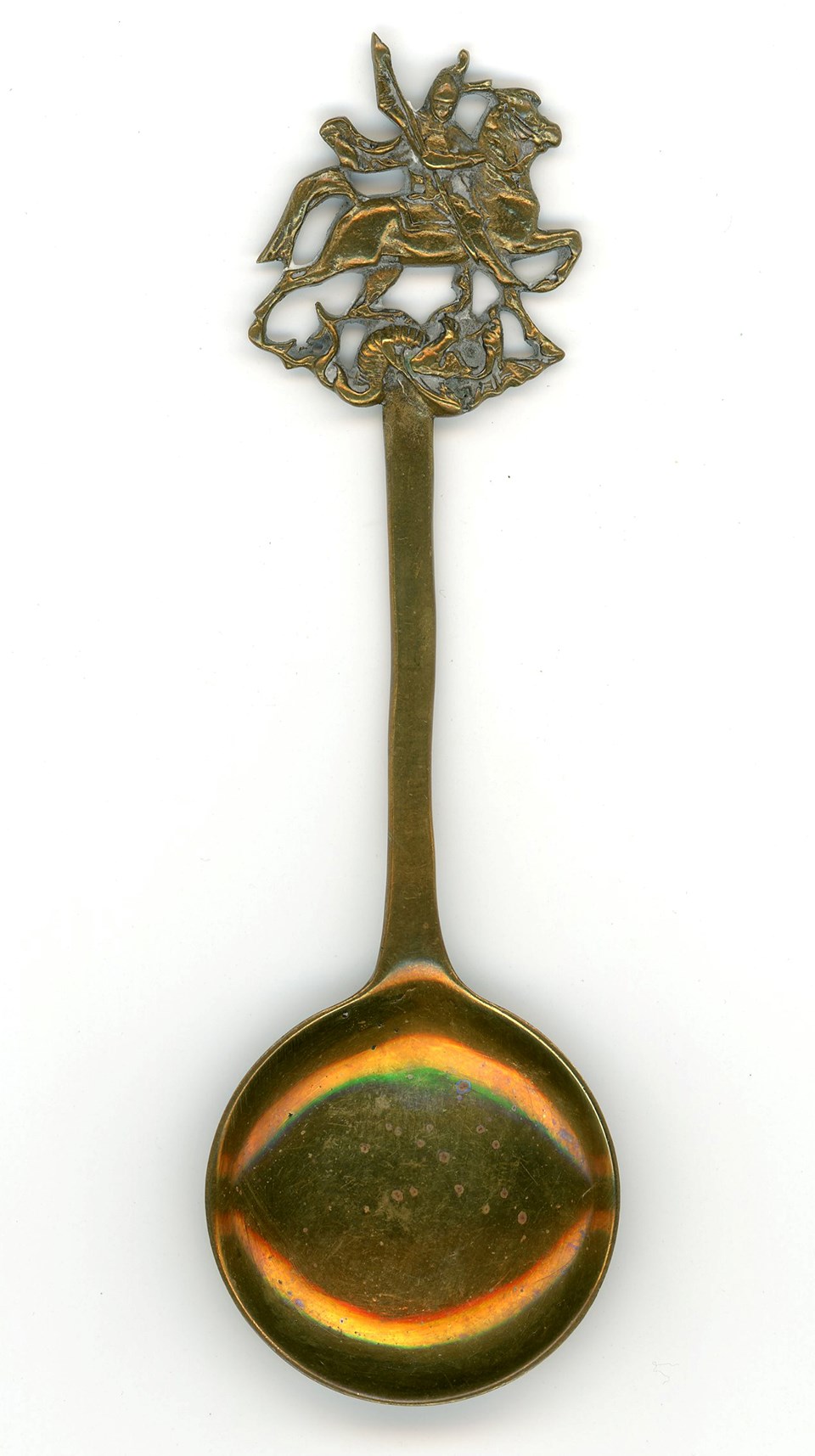|
Longfellow House - Washington's Headquarters National Historic Site has a large museum collection consisting of thousands of objects, many of which are not regularly displayed in the house's furnished exhibit rooms. Every month, an object will be featured on this page, providing a look at an unusual piece from the collection.

The date of this spoon’s registry mark indicates it probably belonged to Alice Longfellow. Alice traveled to England several times, including in 1910 and 1911, both of which may have been occasions on which she could have obtained this item. In addition to the registry mark, the design showing St. George slaying the dragon identifies this as an English piece. St. George is the patron saint of England and has been since so the 1300s, and Saint George’s cross, a red cross on a white field, forms the national flag of England. This spoon is just one of the many small items Alice collected during her European travels. Souvenir spoon collecting exploded in popularity in the US in the late 1800s, and the 1893 Columbian Exposition in Chicago further fueled the trend. It had been common in Europe earlier than that, as tourism became accessible to a wider segment of the population and travelers looked for things to acquire as remembrances of their trip. The spoons often had decorative elements displaying something relating to the locale they could be bought, whether it be an iconic building, historic personage, or geographical feature. The advent of World War I in 1914 saw spoon collecting fade as a tourist activity, though there was a resurgence in the later 20th century and souvenir spoons continue to be produced for collectors today. |
Last updated: April 1, 2024
